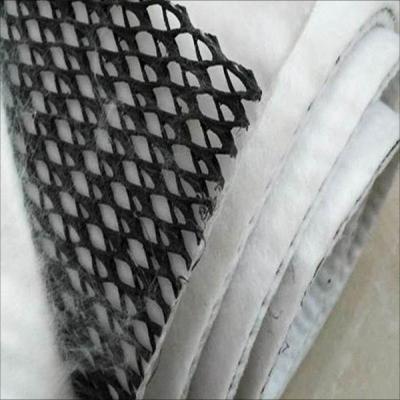3-D drainage network ,It is a drainage material with a three-dimensional structure. It is made of high molecular polymers such as polyethylene ( PE) Or polypropylene ( PP), Processed by special technology, it can form a network structure with multiple drainage channels and high compressive strength. Therefore, the three-dimensional drainage network can not only maintain high hydraulic conductivity, but also bear large loads, which can ensure its stability and durability in complex environments.
In retaining wall engineering, the application of three-dimensional drainage network is mainly reflected in the following aspects:
1. Improve the drainage efficiency of retaining walls
Under the action of rainwater or groundwater, the soil behind the retaining wall is easy to form accumulated water, which leads to the increase of internal pressure in the soil and threatens the stability of the retaining wall. The three-dimensional drainage network has a unique three-dimensional structure, which can form multiple drainage channels inside the soil, reduce the water content inside the soil and improve the drainage efficiency. It can not only reduce the pressure of the soil on the retaining wall, but also prevent the soil from slipping or collapsing due to accumulated water.
2. Enhance the structural stability of retaining wall
Three-dimensional drainage network can also enhance the stability of retaining wall structure in retaining wall engineering. On the one hand, the high compressive strength of the drainage network can resist the lateral pressure of the soil on the retaining wall and prevent the retaining wall from being deformed or destroyed. On the other hand, the grid structure of the drainage network can form a good interlocking effect with the soil, increase the friction between the soil and improve the overall stability of the retaining wall.
3. Promote soil consolidation behind the retaining wall
In retaining wall engineering, three-dimensional drainage network can also promote the consolidation of soil behind retaining wall. With the discharge of water from the drainage network, the pore water pressure inside the soil gradually decreases, and the effective stress between soil particles increases, which can promote the consolidation and compaction of soil. It can not only improve the stability of retaining wall, but also reduce the settlement and deformation caused by soil consolidation.
4. Adapt to complex geological conditions
Three-dimensional drainage network has very good adaptability and flexibility, and can adapt to various complex geological conditions. Whether on soft soil foundation, sloping ground or rock foundation, drainage net can play its unique drainage and reinforcement role to ensure the stability and safety of retaining wall.
From the above, it can be seen that three-dimensional drainage network has a wide application prospect and significant advantages in retaining wall engineering. It can not only improve the drainage efficiency of the retaining wall and enhance the structural stability of the retaining wall, but also promote the consolidation of the soil behind the retaining wall and adapt to various complex geological conditions.
Post time: Mar-05-2025




